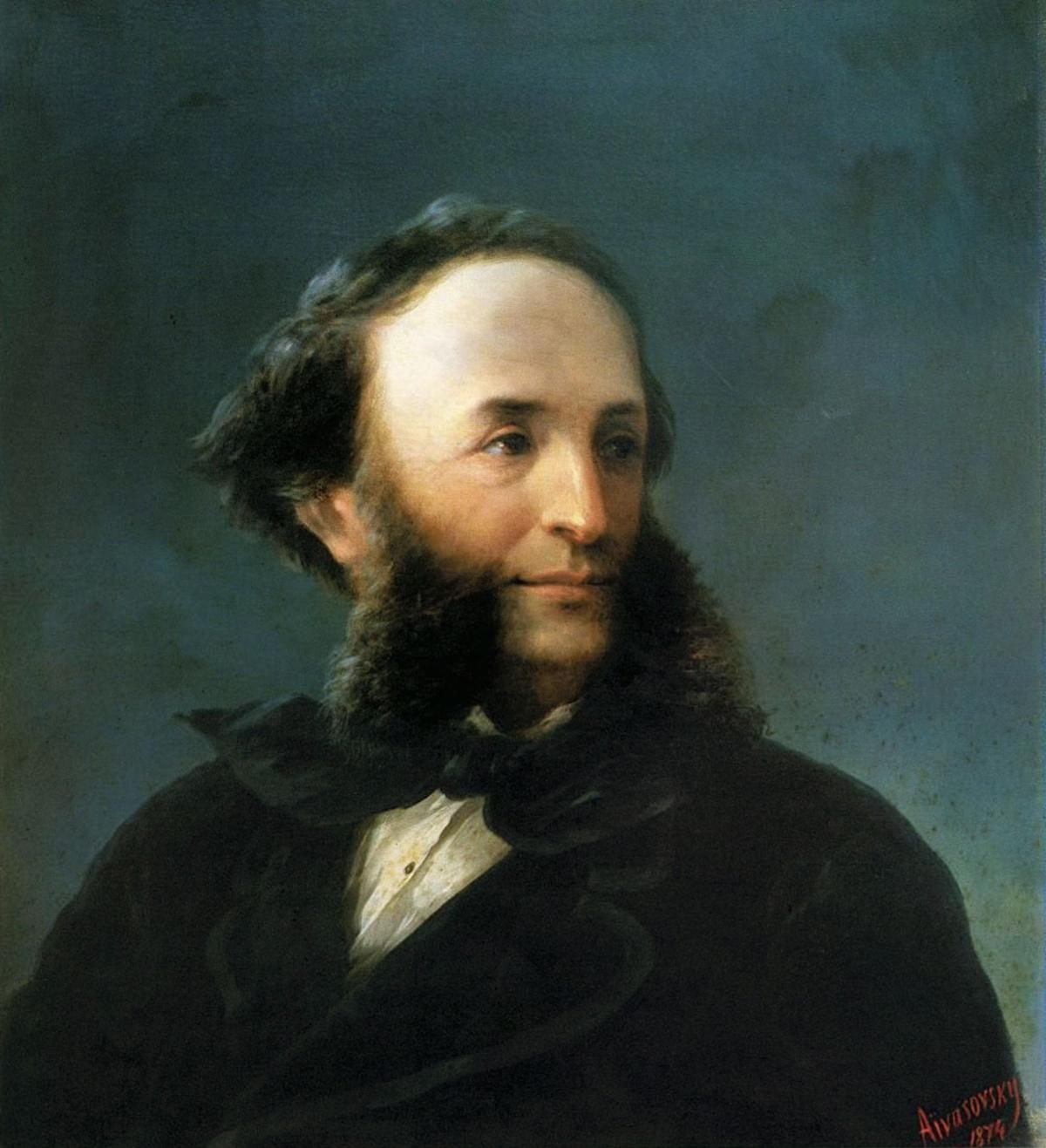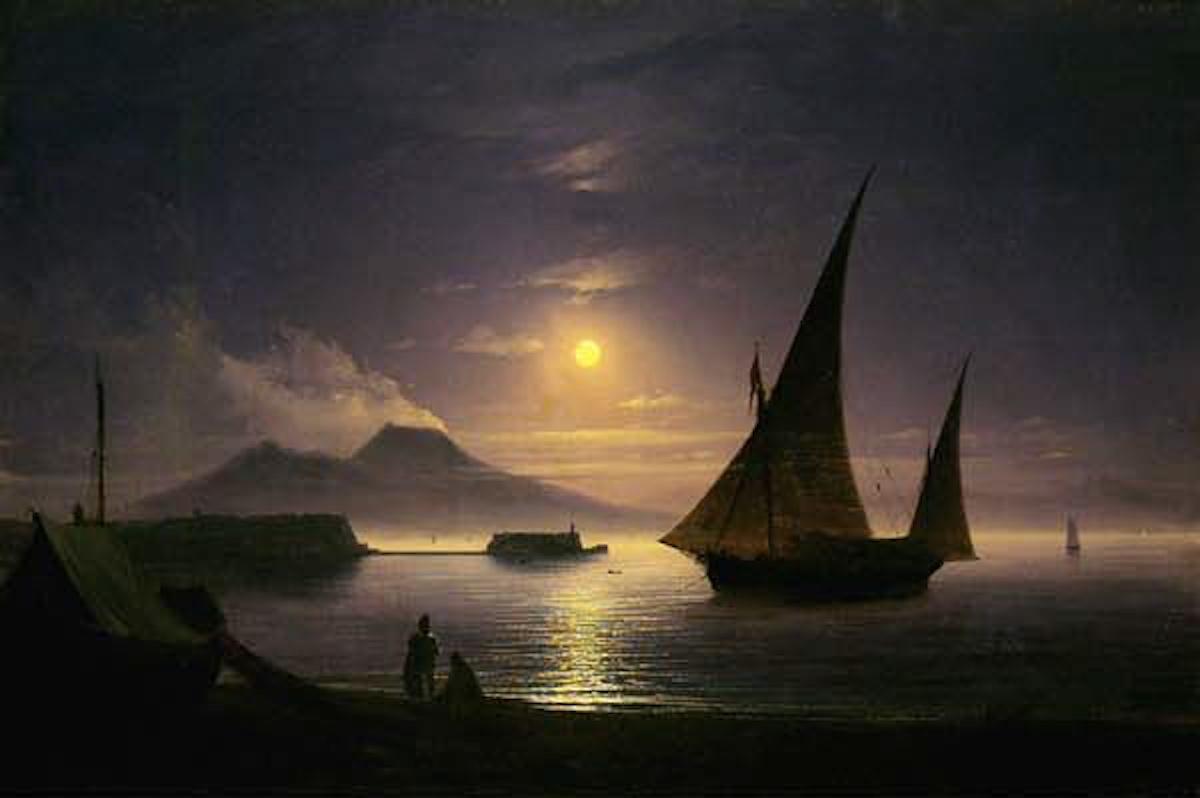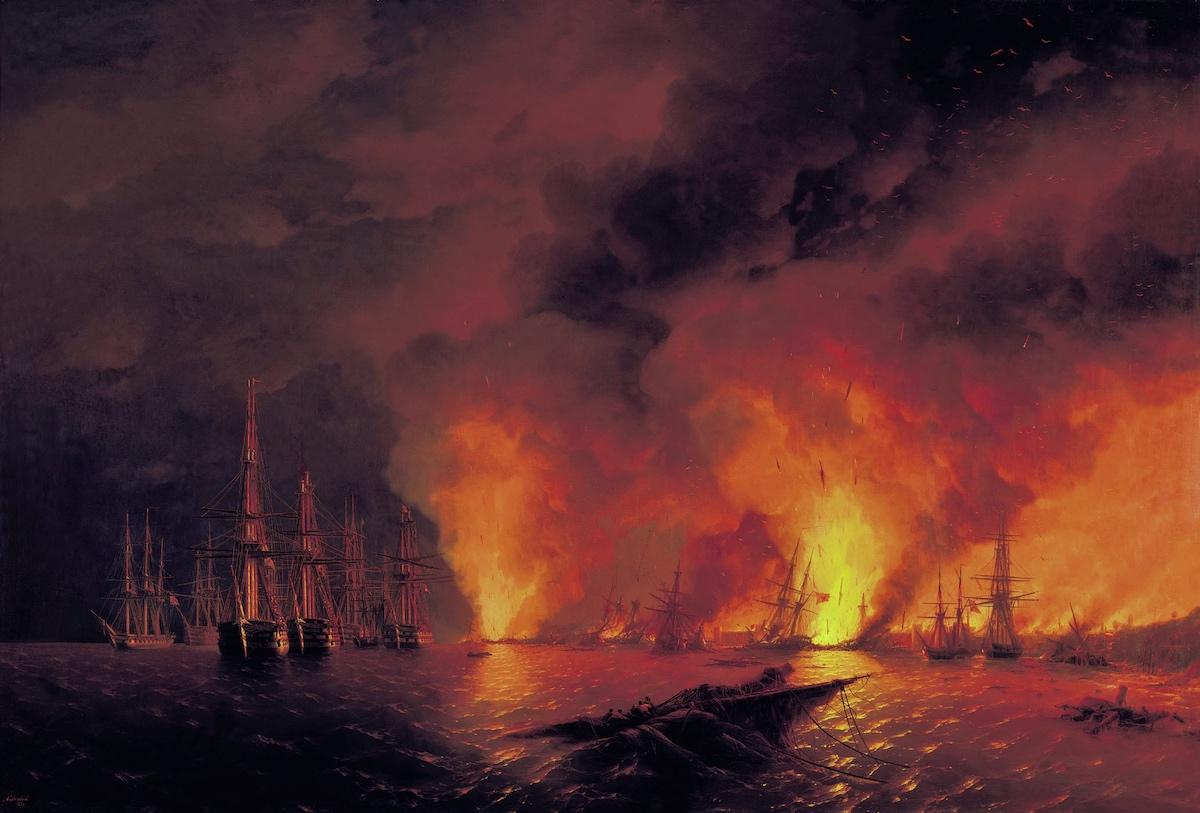His success at the Academy earned him financial support to study abroad, and in 1840 he traveled to Europe to study in Rome. Aivazovsky would quickly establish himself as a member of the art community there, and his work was frequently included in different Italian exhibitions. He was particularly adept at painting marine seascapes, a skill he had mastered in his coastal hometown of Feodosia. In Italy, he developed his own personal style, one that was able to capture the tangible romantic qualities of seascapes as well as the abstract. The Bay of Naples was a subject of particular interest to Aivazovsky, and during the early half of the 1840s, several of his paintings would depict this body of water. He painted three separate pieces of the Bay of Naples at night, capturing the divine beauty and serenity of the moonlight reflecting off of the calm waves and the towering Mount Vesuvius in the background.

Ivan Aivazovsky, The Ninth Wave, 1850, oil on canvas, Russian Museum
Ivan Aivazovsky was a Russian Romantic painter. He is considered to be one of the greatest masters of marine art. Aivazovsky, born in 1817 in Feodosia, Crimea was the son of an Armenian merchant named Konstantin Gaivazovsky. He and his family migrated from Western Armenian in the seventeenth century, eventually settling down in Feodosia. Though baptized under the name Hovhannes Aivazian at the St. Sargis Armenian Apostolic Church, Aivazosky would eventually refer to himself by the Russian version of his name: Ivan Gaivazovsky.
Despite his family’s modest financial situation, Aivazovsky was able to receive an education at the aforementioned St. Sargis Armenian Apostolic Church. Aivazovsky’s earliest encounter with art was through Jacob Koch, a local architect that taught Aivazovsky the basics of drawing. Aivazovsky’s unbelievable natural artistic ability allowed him to travel to the Russian capital, St. Petersburg, where he would study at the Imperial Academy of Arts in Maxim Vorobyov’s landscape class and later on in Alexander Sauerweid’s battle-painting class. In October 1837, he graduated from the Academy with gold medals for his works Calm in the Gulf of Finland and The Great Roads at Kronstadt, the first of many awards he would receive in his illustrious career.

Ivan Aivazovsky, Self-portrait (1874). Oil on canvas, 70.5 × 62.5 cm. Uffizi, Florence

Ivan Aivazovsky, Naples Bay, 1842, oil on canvas
During this period he traveled extensively throughout Europe, spending time in France, Holland, Spain, and Germany, where his work was regularly featured in exhibitions. In 1845, Aivazovsky returned to St. Petersburg, where he was given the title of Academician at the Imperial Academy of Arts.
His skillful ability to paint seascapes also earned him the position of Painter to the Staff of the Naval Ministry, a job that enabled him to travel with the Russian fleet and document their endeavors. This opportunity would establish him as a Russian national hero, and he is still celebrated as such long after his death.
Aivazovsky completed his most recognizable painting, The Ninth Wave, in 1850. It depicts a scene of people clinging to cross-shaped debris from a ship in the early morning, perhaps symbolizing human’s desperate attempt to save themselves from earthly sin. At the height of his artistic powers, Aivozovsky could not escape the influence of larger political forces that were present in the mid-nineteenth century. When the Crimean War broke out in 1853, Aivozovsky painted several famous scenes from naval battles, including the Battle of Sinop (1853) and The Capture of Sevastopol (1856). As his career progressed into its later stages, Aivazovsky’s Romantic style would gradually become more Realist in nature. His frequent trips between St. Petersburg and Feodosia gave him ample opportunity to experiment with this new interest in Realism with the scenery of the Ukrainian countryside.

Ivan Aivazovsky, The Battle of Sinop on 18 November, 1853 (Night after Battle), Oil on canvas, Central Naval Museum, St. Petersburg, Russia
Ivan Aivazovsky is ultimately remembered as one the greatest marine painter in history, hailed to this day as a national icon across Ukraine, Russia, and Armenia. Over the course of his career, he produced over six thousand paintings, an absolutely ludicrous volume of work that demonstrates just how prolific he was. Aivazovsky died May 2nd, 1900 in Feodosia, and was buried at the St. Sargis Armenian Apostolic Church, at his request.




























